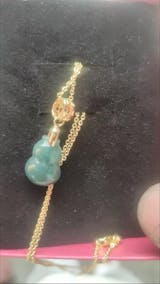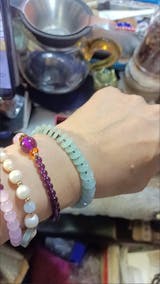Exploring Song Dynasty Aesthetic Elegance: Appreciating the Four Leisurely Pursuits
- Introduction
- Tea Ceremony: Brewing Essence
- Incense Burning: Aromatherapy for the Soul
- Flower Arrangement: Blooms of Philosophical Beauty
- Hanging Paintings: Artistic Ambiance
- Conclusion
Introduction
In the pursuit of a leisurely and refined lifestyle, Song Dynasty literati embraced the philosophy of "tasting tea, arranging flowers, burning incense, and hanging paintings," collectively known as the Four Arts of Life. These practices elevated daily life to an artistic realm, enriching internal cultivation and personal refinement. Here you can learn what are the four art of Song dynasty.

1. Tea Ceremony: Brewing Essence
Brewing a pot of fragrant tea to entertain distant friends is an art that flourished during the Song Dynasty. The popular tea ceremony involved grinding tea leaves into powder, placing them in a teacup, and stirring with water until a frothy consistency was achieved. This method continues to endure in the Japanese tea ceremony. Chinese tea culture, deeply embedded in everyday life, integrates poetry and painting.

2. Incense Burning: Aromatherapy for the Soul
The history of incense culture in China can be traced back to before the Spring and Autumn Period, and during the flourishing Tang Dynasty, the art of blending, fumigating, and appreciating incense had become an elegant form of art. The Song Dynasty marked the zenith of incense culture. The practice of incense blended into daily life, being used for purposes such as perfuming clothes, dispelling pestilence, measuring time, and meditation. Literary figures and scholars often gathered to enjoy incense, engage in reading, discuss paintings, and ponder philosophical matters, immersed in the lingering fragrance. Burning incense that suits you opens deep channels of inner knowing, inner peace and clarity, which makes you get rid of anxiety and depression, and see a different scene of life.

3. Flower Arrangement: Blooms of Philosophical Beauty
The art of flower arrangement in China originated before the Sui Dynasty, initially used for altars and Buddha offerings. By the Tang Dynasty, flower arranging gained widespread appreciation in the imperial court, reaching common literati during the Song Dynasty. Song-era flower arranging broke away from the grandiose style of the Tang Dynasty, pursuing a fresh and clear aesthetic, emphasizing the beauty of lines. Known as "ideological flowers," these arrangements conveyed philosophical insights and moral cultivation, profoundly influencing future floral art styles.

4. Hanging Paintings: Artistic Ambiance
The concept of "hanging paintings" initially referred to displaying artworks related to tea at seating areas during tea gatherings. In the Song Dynasty, the focus shifted primarily to scrolls containing poetry, verses, calligraphy, and paintings. Literati paid meticulous attention to the content and presentation of hung paintings, making them not only objects of admiration in everyday living spaces but also integral components of elegant gatherings.

Conclusion:
In the intricate tapestry of time, the Song Dynasty emerges as a beacon of refined living, showcasing the epitome of cultural elegance through the Four Arts of Life. Tasting tea, arranging flowers, burning incense, and hanging paintings were not just pastimes; they were become a form of meditation.
The Song literati, through the artful practice of these activities, cultivated not only their surroundings but also their inner selves. It was a lifestyle steeped in philosophy, where every cup of tea, every fragrance of incense, every bloom of a flower, and every stroke on a hanging scroll became a vessel for meditation.
Nowadays, we still can find inspiration in these leisurely pursuits to create a more harmonious and meaningful existence. Sip a cup of tea, light a stick of incense, sit quietly and meditate for a moment, dissolve your inner attachments, and return to peace and harmony.



























































